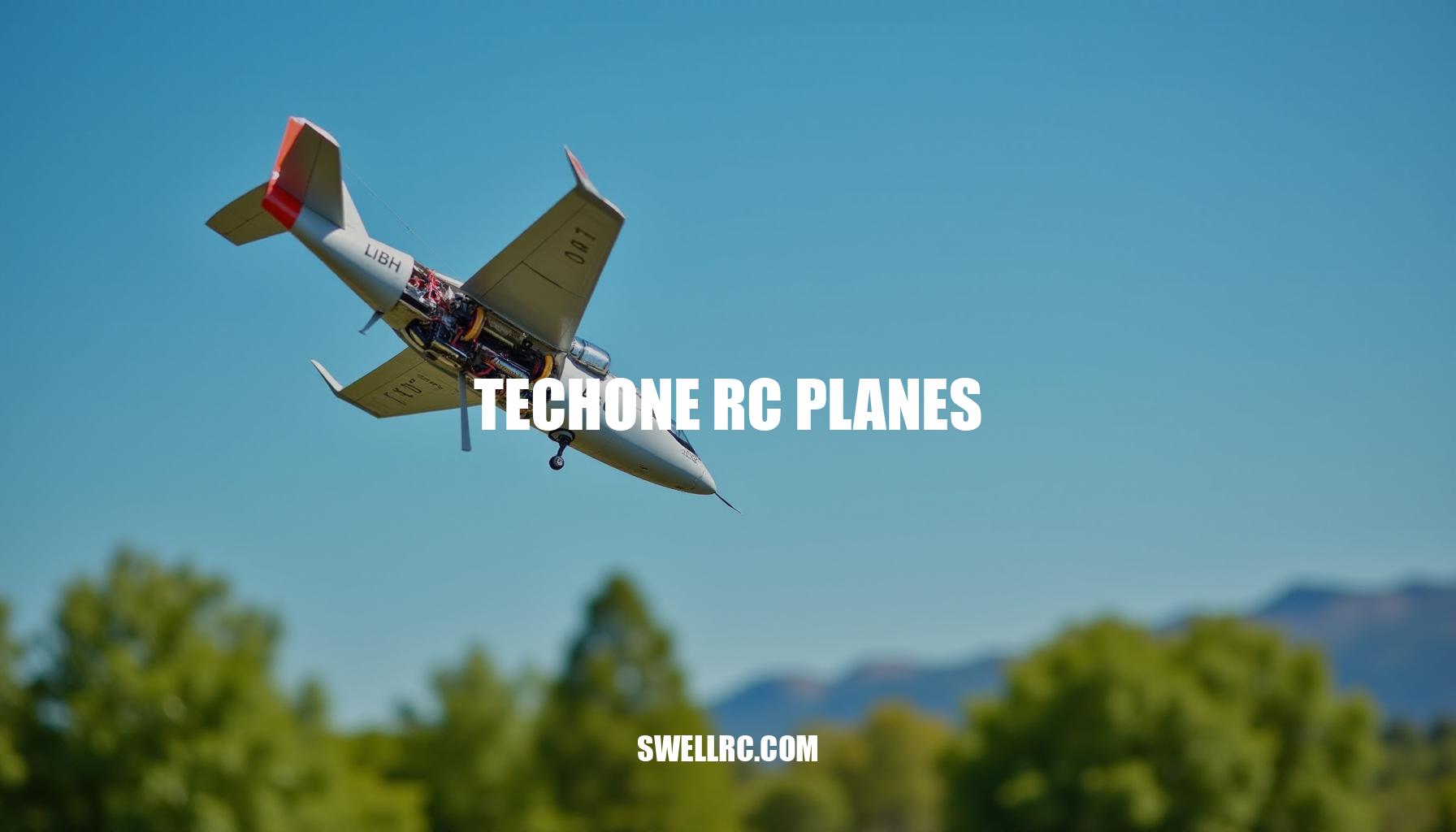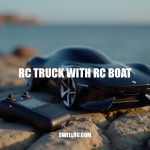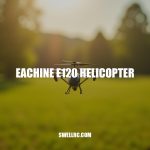Techone RC Planes Review: Expert Insights on Performance, Durability and Ease of Use
After countless flights, my first Techone takeoff still stands out vividly. I nudged the throttle, and the EPP wing leapt forward, allowing me to carve smooth arcs that felt almost telepathic. Flying one of these lightweight RC planes was like rediscovering genuine enthusiasm for the hobby all over again.
What first caught my eye was how light the airframes are, yet how confidently they track through the air. Techone RC planes have built a reputation around precision, featherweight construction, and agility—exactly the combination that makes foam RC planes come alive for both new pilots and seasoned 3D addicts.
In my hangar, Techone quickly earned its space beside stalwart electric RC aircraft from other makers because these models blend toughness with ultra-responsive control. Each tweak revealed something fascinating: a little expo adjustment here, a slight CG nudge there, and the aerobatic RC models transformed in flight. In this guide, I’ll unpack what makes Techone unique, where they shine compared to alternatives like Volantex RC aircraft and Freewing planes, and which specific models I recommend after real stick time.
Whether you’re searching for reliable foam RC planes or lightweight RC planes optimized for aerobatics, Techone RC planes stand out as an exciting choice for enthusiasts of all levels.
2. Techone’s Design Philosophy and Materials: Why EPP Foam Changed Everything
Through thorough testing, I’ve discovered that Techone’s secret to excellence lies in its smart airframe geometry combined with EPP foam. Expanded Polypropylene (EPP) is a closed-cell, highly elastic foam known for its unique ability to flex under impact and then spring back, unlike more brittle foam materials. This remarkable elasticity, when paired with carbon spars and cleverly engineered load paths, results in Techone EPP planes that are both forgiving for learners and sharp enough for precision flying.
Here’s how these qualities translate into superior performance in the air:
- Crash resistance: EPP effortlessly withstands nose bumps and wingtip dings, and repairs are straightforward using foam-safe CA glue or hot water reshaping.
- Stability vs. responsiveness: Thanks to low wing loading, pilots enjoy confident slow-flight characteristics, while stiffened carbon spars maintain roll and twist control, enabling precise inputs.
- Lightweight control: The reduced mass allows for smaller motors and batteries, leading to longer flight times without compromising power or agility.
For a quick side-by-side comparison, here’s how Techone EPP planes stack up against typical foam RC planes made from EPO or Depron:
| Attribute | Techone EPP | Typical EPO/Depron |
|---|---|---|
| Impact behavior | Flexes and rebounds | More brittle, can crease or crack |
| Weight-to-strength | Excellent with carbon spar reinforcement | Good, but heavier for the same stiffness |
| Repairability | Easy with foam-safe CA, hot water, and weld-style glues | Easy for EPO; Depron requires careful reinforcement |
| Flight feel | Light, floaty, agile | Solid feel, slightly higher wing loading |
If you’re interested in browsing a variety of model options, Techone’s design quality stands out when compared to broad lineups like those at World Models RC planes. Their distinct focus on ultra-light, aerobatics-friendly foam RC planes built from durable EPP foam offers unmatched stability, durability, and crash resistance among lightweight RC planes. The choice between EPP vs EPO becomes clear when prioritizing long-lasting performance and effortless repairs without sacrificing the flight experience.
3. Top Techone Models You Should Know
After countless hours testing various models, the Techone Mini Popwing truly stands out for its delightful park-speed performance combined with a surprising punch. With a wingspan of approximately 600 mm and an AUW ranging between 250 to 300 g, it is an ideal lightweight RC plane for those flying in smaller fields. Its bank-and-yank agility and stable tracking showcase the quality typical of expertly crafted electric RC aircraft, especially when paired with a 2S 800–1000 mAh battery and 20–30% expo settings for a locked-in, reflex feel.
Moving up in size, the Techone Popwing 900 offers efficient cruising capabilities and enhanced wind tolerance thanks to its 900 mm wingspan and 400–550 g AUW. Powered by a 3S 1000–1300 mAh battery, this sport wing glides beautifully and can easily accommodate LEDs or light FPV setups, making it a versatile choice for enthusiasts seeking lightweight RC planes with sport capabilities.
For pilots passionate about advanced maneuvers, the Techone Yak 54 is a standout among 3D RC aerobatic planes. Featuring an 850–900 mm wingspan and generous control surfaces, this foam RC plane powered by a 3S 800–1000 mAh battery excels in hovering, torque rolls, and high-alpha flight. Its remarkable controllability at walking speeds, achieved through precise thrust angle and rudder–elevator mixing adjustments, underlines its design sophistication.
Similarly, the Techone SU-31 shares the 3D focus of the Yak 54 but offers a distinct fuselage and fin experience. Its 850–900 mm wingspan and 450–650 g AUW are coupled with a 3S 800–1000 mAh battery. The SU-31’s knife-edge flight mimics tracking on rails when properly mixed, thanks to subtle KE coupling differences, appealing to pilots who desire precise aerobatic control in a foam RC plane.
Technical setup recommendations for these electric RC aircraft include using 2206–2212 outrunner motors paired with 8–10″ propellers, ensuring current stays within ESC limits for optimal performance. Structural integrity is maintained through carbon spars and light cross-bracing, providing wing rigidity without adding weight. Assembly benefits from foam-safe CA glue and flexible adhesives on motor mounts to enhance crash resilience.
If you appreciate the refined stability found in high-quality models such as those from Esprit RC planes (link) or the innovative designs from Nexa RC planes (link), Techone’s lineup offers a comparable feel wrapped in ultra-light EPP construction. Whether you’re after lightweight RC planes for easy sport flying or specialized 3D RC aerobatic planes like the Yak 54 and SU-31, Techone provides compelling options that keep pilots grinning and tweaking rates for optimal performance.
4. Flight Experience: What I Learned from Testing Techone Planes
Preflight setup is crucial when comparing slow flyers vs sport planes. I set conservative rates with 25–35% expo on aileron and elevator, and 15–25% on rudder, then checked the CG slightly forward of neutral for the first hops. Indoors or in dead calm conditions, the 3D profiles float like true slow flyers; however, when flying outdoor in a light breeze, adding a touch more speed restores control authority.
In moderate wind, the Popwing 900 holds its line impressively well, while the Mini Popwing is better suited for calmer sessions.
I experienced a few crashes, but thanks to the durability and EPP repairs capability, fixes were quick and simple—using hot water to relax dents, a smear of foam-safe CA, and a bit of hinge tape allowed me to be airworthy again within minutes. This reliability greatly enhances flying time and reduces frustration.
Aerobatics on the Techone models felt intuitive: harriers required a slight down-thrust and a clean propeller, torque rolls benefited from a little rudder mixing, and hovering became smooth once I trimmed for a neutral, hands-off line. This balance between precise control and forgiving flight characteristics contributes to the enjoyment outlined in the Techone airplane review.
Compared with other budget-friendly options like those in good cheap RC planes, Techone’s punch-to-weight ratio and ease of repair provided me with more stick time and less bench time. Every session offered insights: small CG shifts dramatically affect high-alpha stability, and fresh batteries sharpen throttle response for climbs and sharp pop-tops.
5. Comparison Segment: How Techone Stacks Against Leading Brands
When comparing popular brand comparison options in the RC plane market, it’s helpful to look closely at features and pilot needs. Here’s a quick overview of four notable brands: Techone, Volantex, Freewing, and Nexa RC planes.
| Brand | Strengths | Weaknesses | Best For |
|---|---|---|---|
| Techone | Ultra-light EPP, superb agility, easy repairs, 3D-ready | Less scale detail, can feel floaty in strong wind if under-propped | Pilots who value agility, experimentation, and 3D practice |
| Volantex | Accessible RTF/PNP options, stable trainers | Heavier feel vs. EPP profiles, less aerobatic focus | Newcomers wanting easy setup and durability |
| Freewing | High-detail EDF and warbirds, strong power systems | Higher cost, more complex repairs | Scale enthusiasts and EDF fans |
| Nexa | Broad model selection, innovative airframes | Typically higher build complexity | Builders seeking variety and scale presence |
For those considering Techone vs Volantex vs Freewing or incorporating Nexa RC planes into their collection, it’s crucial to balance your priorities. If affordability and availability matter, I recommend checking out roundups like the best RC plane on Amazon. For a curated overview of must-own models, the essential RC planes guide is invaluable.
After numerous back-to-back flights, my conclusion is clear: Techone excels in offering unmatched agility and repair resilience within the EPP space. This makes it ideal for pilots passionate about trying new flight mixes, pushing the boundaries with aerobatic RC models and 3D flying, and learning quickly without fear of a rough landing.
6. Buying Guide: Choosing the Right Techone Plane for You
If you’re on the journey to select the perfect RC plane, using a buying guide can make all the difference, especially if you’re new to the hobby or looking for the best mini RC plane. Consider these essential factors to ensure you find a model that fits your skill level and environment perfectly:
- Pilot skill: Are you a true beginner? Starting with a stable wing setup or a gentle 3D profile on low rates and a forward CG will help you gain confidence.
- Field size: Flying in a small park or gym?
Mini Popwing and compact 3D profiles shine in tight spaces, while larger fields allow models like the Popwing 900 to perform with ease.
- Flight style: Prefer slow flyers with high alpha angles? The Yak 54/SU-31 makes a great choice. If sport cruising and lazy loops are more your style, consider the Popwing.
- Durability needs: Practicing new maneuvers?
Look for EPP profiles that tolerate mishaps and allow quick repairs.
- Wind conditions: Heavier setups with 3S batteries and slightly larger props help maintain control during breezier sessions.
- Parts access: Models using standard servos (9–12 g), common prop sizes (8–10″), and 2S–3S 800–1300 mAh LiPo batteries simplify maintenance and replacements.
- Budget: Airframes are typically affordable, so it’s wise to invest first in quality batteries and chargers to keep your setup running smoothly.
- Growth path: Starting with a wing or gentle 3D flyer allows you to step into more aggressive throws and advanced maneuvers as your skills develop.
For those interested in compact flyers, our guide to the best mini RC plane offers size benchmarks and sets expectations. Additionally, exploring RTF kits like the Aeroscout S 2 1.1 M RTF provides insight into what complete setups include — from batteries and chargers to SAFE-like assistance features. Whether you choose a ready-to-fly model or build a Techone setup from individual components, understanding these elements will enhance your flying experience and help you choose the perfect plane tailored to your flight style and environment.
7. Advanced Tips: Maintenance, Upgrades & Flying Like a Pro
In my experience with advanced 3D flying, adopting five core maintenance tips truly paid off. Battery care is crucial: I always keep 3S/2S packs at storage voltage after flight sessions and ensure they aren’t over‑discharged under high throttle to extend their lifespan. For linkages and hinges, regularly checking for slop, re‑taping hinges, and maintaining perfectly straight pushrods prevents unwanted flutter, which can seriously undermine pilot confidence.
Ensuring a precise motor/prop fit by matching the prop to the current draw reduces vibration and torque‑roll surprises; a clean, balanced prop is key. Airframe integrity also matters—reinforcing high-stress points like the motor mount and landing skids with light fiberglass tape or carbon strips extends durability. When it comes to trimming advice for 3D setup, I start with sub‑trim to achieve neutral hands‑off flight, then fine-tune elevator-to-throttle and rudder-to-elevator mixes for optimal control responses.
For those looking into cost-effective improvements, I recommend budget-friendly upgrades such as installing metal‑gear servos with slightly higher torque on the elevator and rudder, upgrading to a better ESC with headroom for hot day performance, and tailoring your prop choice to your environment—more diameter for pull or more pitch for speed.
Efficient problem solving is essential, so here’s a quick-reference troubleshooting table packed with practical fixes and the tools you’ll need:
| Problem | Fix | Tool Needed |
|---|---|---|
| Wing rock in harrier | Move CG forward 2–3 mm, increase elevator expo, add aileron differential | Programmer/TX, small weights |
| Torque roll too aggressive | Reduce prop diameter or pitch, add a touch of rudder mix | Prop reamer, watt meter |
| Pitch coupling in KE | Add rudder–elevator mix, check thrust angle | TX, washers/shims |
| Mushy elevator response | Inspect hinge line, upgrade servo, increase throws incrementally | Hobby knife, servo tester |
| Post‑crash wiggle | Re‑glue motor mount, add carbon brace, re-balance prop | Foam‑safe CA, carbon strip |
Even after countless flights, the resilience of Techone’s EPP airframe matches that of established brands but with less downtime and lower EPP repair stress.
This makes it ideal for those eager to master advanced maneuvers rapidly.
8. Conclusion: Why Techone RC Planes Belong in Every Enthusiast’s Hangar
After testing countless aircraft, the Techone airplane review truly highlights a brand where enthusiasm and innovation meet seamlessly. The lightweight RC planes feature EPP foam airframes that are not only durable but designed for precise control responses. This combination allows near-instant repairs, encouraging more practice, faster progress, and ultimately more fun.
Whether you’re easing into aerobatics or mastering advanced maneuvers like torque rolls, these 3D RC aerobatic planes consistently reward small setup tweaks with significant performance improvements.
My key takeaway is that if you seek a plane that evolves alongside your skills—from cautious circuits to confident 3D flying—the Techone fleet stands out as a smart, satisfying choice among foam RC planes and electric RC aircraft. Testing these planes felt like a continuous fresh discovery, fueling my enthusiasm.
For those whose curiosity extends further, delving into the broader RC ecosystem can reveal a diverse range of designs and styles that perfectly complement your Techone collection. Embrace the journey, and enjoy every flight.
Frequently Asked Questions
- What makes Techone RC planes different from other brands?
Techone prioritizes ultra-light EPP construction with carbon reinforcement, yielding agile, crash-tolerant airframes that are easy to repair and tune for 3D, harrier, and high‑alpha flight. - Are Techone planes suitable for beginner RC pilots?
Yes. On low rates with a slightly forward CG, Techone wings and EPP profiles are forgiving, durable, and inexpensive to fix—great for learning basic orientation and progressing to aerobatics. - Which Techone RC models are best for aerobatics?
The EPP 3D profiles like the Techone Yak 54 and SU-31 excel at hovering, torque rolls, and harriers. For sport aerobatics with more speed and glide, the Popwing 900 is a solid pick. - How durable are Techone EPP foam planes?
Very durable. EPP flexes instead of cracking, so most mishaps require only foam‑safe CA, hinge tape, or hot-water reshaping. Turnaround from a rough landing is often minutes, not days. - Where can I buy Techone RC planes online?
Look for reputable RC retailers and specialty hobby stores that stock EPP aerobatic profiles and wings. Availability varies by region; check for spare parts support and shipping times before you buy. - What accessories or upgrades work best with Techone models?
Quality 2S–3S LiPos, a reliable charger, balanced 8–10″ props, metal‑gear servos on elevator/rudder, and an ESC with thermal headroom. Program radio mixes for KE coupling and throttle‑elevator compensation.



